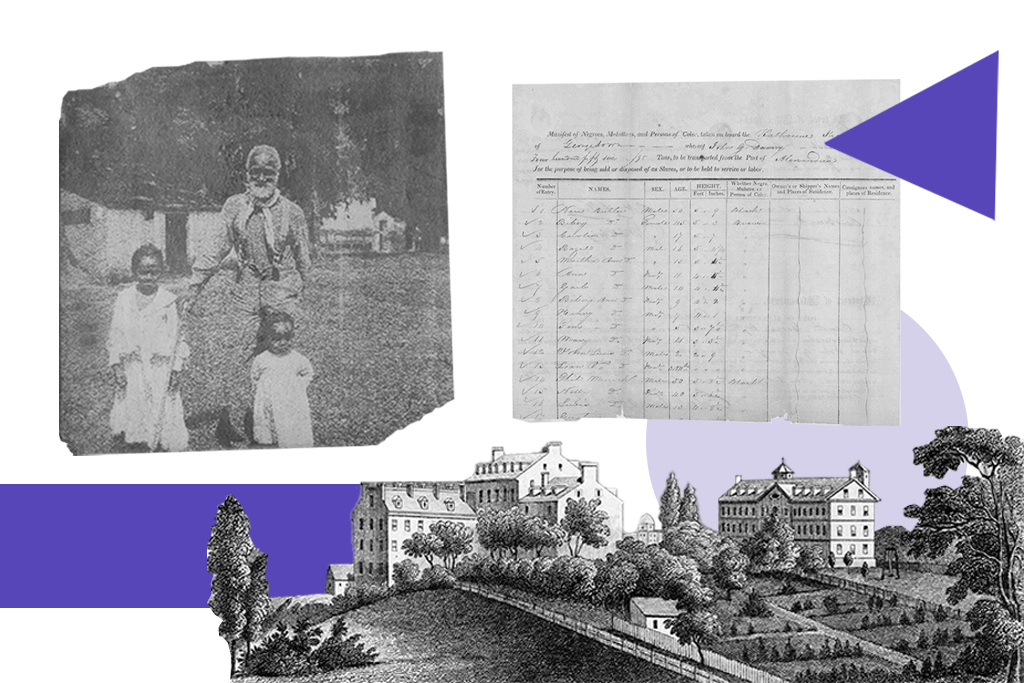It’s June 19, 1838. No one knows it yet, but the American Civil War will kick off in just over two decades. Slavery in the United States will come to an end after that conflict—but for now, the sale of enslaved human beings is still legal.
Now, let’s bring in the Jesuits, a Catholic religious order. Jesuit missionaries emigrated to the colonial United States beginning centuries earlier in the 1600s, becoming land and plantation owners in the-then British provinces of Maryland and Pennsylvania. Staffed by enslaved people, the Jesuits used their plantations to fund missionary work.
But by the 1830s, these plantations were no longer the money makers they once were. Public opinion in the region was turning against the practice of enslaving human beings. Many Jesuit officials wanted out.
Horrifyingly, senior Jesuit officials in Maryland voted 6–4 to find a buyer for the people they enslaved. On June 19, 1838, Jesuit provincial superior Thomas Mulledy signed an agreement to sell those people to plantation owners in the Southern United States.
. . .
Wikipedia editor User:Ergo Sum has a long history of writing about American Jesuit history on Wikipedia. He has written over 150 articles, 22 of which are academic-quality ‘featured’ articles, a designation given only to “the best articles Wikipedia has to offer.”
“Generations past have gifted us with a wealth of information,” Ergo Sum told me. “It is our job to study it honestly and make it publicly accessible. Through that process, we can arrive at truth.”
Ergo Sum, whose username comes from a famous proposition by French philosopher René Descartes, started editing Wikipedia in 2015 with small typo fixes and improving sentence diction. “It gradually dawned on me that someone was responsible for writing each bit of Wikipedia,” he said. Nearly eight years later, he has made nearly 60,000 changes to the site.
“I like to go down rabbit holes and tend to focus my research and editing thematically,” he said. “Once I get hooked on a topic, I realize that there’s often so much rich depth that can be covered and has not yet been thrown open on Wikipedia.”
One Wikipedia article Ergo Sum revamped was about the 1838 Jesuit slave sale.
Despite decades of academic scholarship, a 2015 email from Georgetown’s president brought the sale back into the public consciousness. This email, which was prompted by the use of Mulledy’s name for a building on the college’s campus, created an outcry, particularly among members of the student body. They criticized the university’s retention of the name of an individual who was so tied to the institution of slavery.
The buildings were permanently renamed in 2017. One became Isaac Hawkins Hall, named for the first listed Black person sold to the southern plantation owners in 1838. The other became Anne Marie Becraft Hall, whose namesake was a Black woman who founded a school near Georgetown.
Wikipedia’s article about the sale was originally created by other volunteers in February 2018 during a Georgetown University-hosted Wikipedia edit-a-thon.
Ergo Sum built on their work by embarking on a research process that included reading hundreds of primary source documents. He ended up adding nearly 3,000 words to the 1838 Jesuit slave sale article, all traceable through individual citations to well over two dozen academic publications and news outlets. Today, about 95% of the article is attributable to his work.
Ergo Sum also spent time improving the articles about William McSherry, the Jesuit provincial superior who helped create the conditions for the sale of enslaved people, and the aforementioned Mulledy, McSherry’s successor who made the final sale agreement.
“The idea that I can research a forgotten topic, write about it, and allow someone else to learn something they never knew is wonderfully exciting,” he told me.
Editor’s note: While the Wikimedia Foundation prefers the term ‘enslaved person/people’ to “separate people’s identity from their circumstances” (as the AP Stylebook says), we have used ‘slave sale’ in this post when referring to the specific name of the Wikipedia article it refers to.
This blog is part of Open the Knowledge: Stories, a series which features volunteers from the Wikimedia movement who are helping the world truly find the sum of all human knowledge on Wikimedia projects. If you want to know more about what knowledge equity is, why it matters, and how you can help us achieve it, join us at Open the Knowledge.
Ed Erhart is a Communications Specialist at the Wikimedia Foundation.

